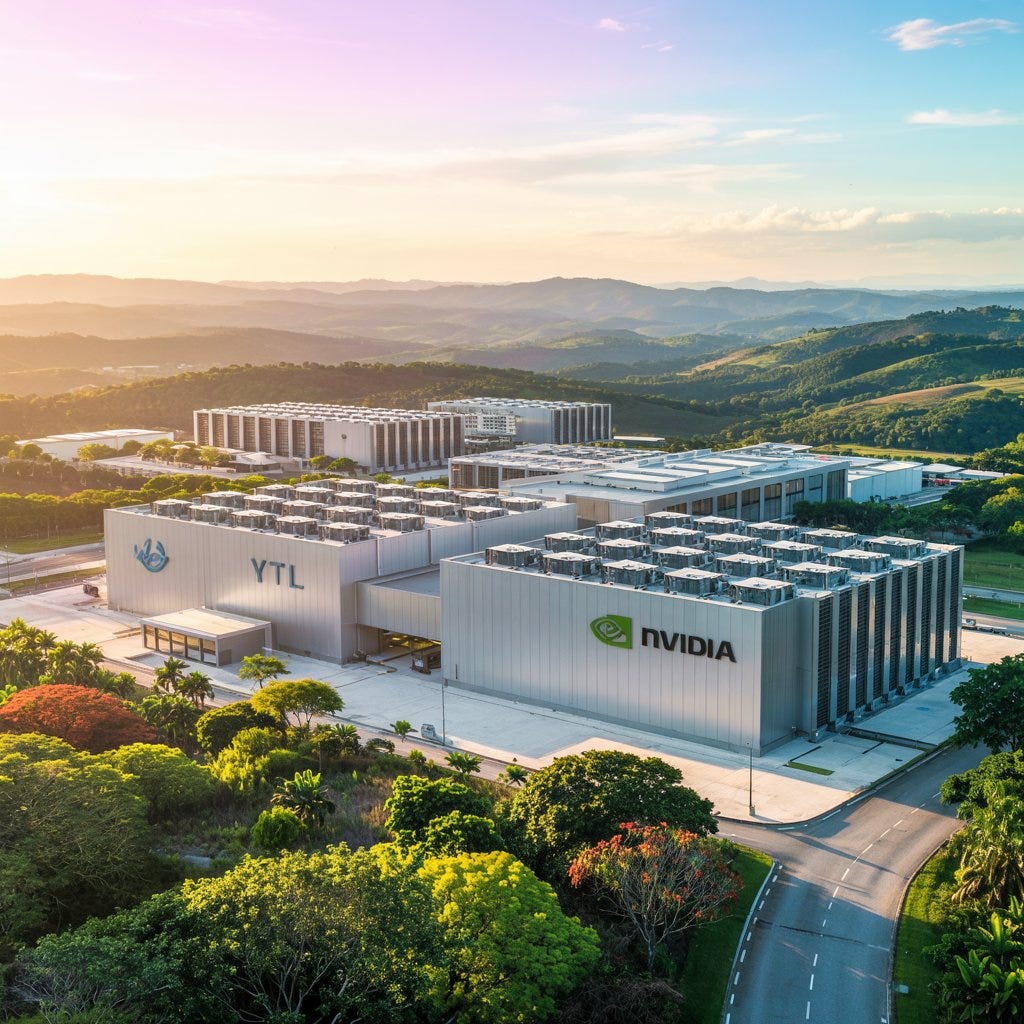Is Nvidia’s $2.36B Bet on Malaysia the Most Strategic AI Play in Southeast Asia?
Inside Nvidia and YTL’s bold plan to build solar-powered AI infrastructure, deploy GB200 superchips, and launch Malaysia’s own ChatGPT competitor.
Welcome to Global Data Center Hub. Join investors, operators, and innovators reading to stay ahead of the latest trends in the data center sector in developed and emerging markets globally.
In late July, YTL Power International inked a $2.4 billion deal with Nvidia to build a new generation of AI data centers in Malaysia. At first glance, it might look like another hyperscale partnership.
But it’s not.
This is the beginning of something far more ambitious: sovereign AI infrastructure, built from the ground up with local models, local laws, and local energy.
Malaysia isn’t just importing compute. It’s building national capacity layer by layer, from chips to culture to shape the future of AI on its own terms.
Why This Deal Matters
Malaysia is going local. YTL AI Labs has released Ilmu 0.1, a large language model built for Malaysian culture and languages. It's already outperforming GPT-4o and Meta's Llama-3 on Malay benchmarks.
The infrastructure is green. The data centers will be powered by 500MW of on-site solar, placing ESG at the heart of Malaysia’s AI edge.
The compute is real. Nvidia's GB200 Grace Blackwell Superchips will power the new facilities capable of over 300 exaflops.
The ambition is national. From new AI laws to a national AI office (NAIO), Malaysia is building a full-stack, full-government playbook.
Sovereign LLMs: A Southeast Asian First
Ilmu 0.1 isn’t just another large language model it’s built for Malaysia, in Malaysia.
It outperformed GPT-4o and Llama-3 on Malay benchmarks and passed national exams in Bahasa Melayu.
This is cultural intelligence at the model level.
Malaysia also became the first country outside China to deploy DeepSeek at scale, integrating it across ministries.
It’s not trying to compete with Silicon Valley.
It’s building an alternative layer on its own terms.
...integrating it across ministries an approach reminiscent of Microsoft’s AI infrastructure shift between ownership and leasing in other sovereign-led markets.
Will It Work?
Not without friction. Malaysia still faces:
A massive AI talent shortage
Gaps in regulatory frameworks, especially around AI decision-making
Dependence on foreign models for foundational training
But it’s also building:
A pipeline of 800,000 trained citizens (via Microsoft partnership)
New open-data legislation and ethical AI guidelines
500MW of renewable-powered capacity with dark fiber to Singapore
The Stakes
Malaysia isn’t just hosting AI infrastructure it’s betting that digital sovereignty can unlock both economic and cultural returns.
With $70B in projected AI-driven GDP growth by 2030, the upside is massive.
But so is the risk.
Success depends on execution: bridging the talent gap, enforcing strong AI laws, and maintaining control over foundational models.
If it works, Malaysia becomes more than a hub.
It becomes a precedent.
The Bigger Picture
Malaysia’s $2.4B deal with Nvidia is more than an infrastructure upgrade—it’s a strategic shift.
With its own LLM, solar-powered data centers, and a national AI office, Malaysia is building sovereign AI from the ground up.
It’s not picking sides between the U.S. and China it’s creating room for both.
If it works, Malaysia won’t just be an AI hub.
It’ll be a model for the Global South.
Because in this era, power belongs to those with capital, compute, and coordination.
Malaysia is building sovereign AI from the ground up part of a broader trend across Southeast Asia as emerging markets assert digital independence.

